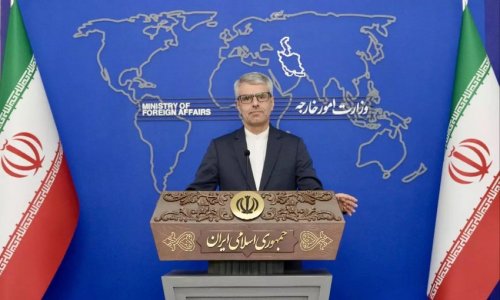Follow us !
The Wu-Tang Clan’s $5m album
World
13:28 | 23.04.2014

The Wu-Tang Clan’s $5m album
The hip-hop group has produced only one copy of their new album, and it will go to the highest bidder. Greg Kot examines music’s new trend of bizarre marketing.Sometimes it seems as if the music industry has become a parade of gimmicks, where every release is accompanied by an acrobatic marketing stunt.The Wu-Tang Clan recently dominated the internet for a few days when the hip-hop collective announced that it would release exactly one copy of its next album, The Wu – Once Upon a Time in Shaolin. The group aims to present the album as a one-of-a-kind work of art rather than a product that can be easily copied and traded like so many digital soup cans. It’ll be housed in an engraved silver-and-nickel box and tour art galleries where fans will be charged $20 to $50 for the privilege of listening to it. Then it will be auctioned off. RZA, Wu-Tang’s producer, says he’s already received an offer of $5 million.If nothing else, we now have a new leader in the race for the most outlandish gimmick yet among music-makers trying to find an audience for their latest creations. Remember when most commercially successful albums were released by a handful of multinational corporations who courted radio conglomerates to play them and supplied chain stores to sell them? Such a quaint 20th Century concept. While that model still exists, it has been twisted in innumerable ways. As recently as a few years ago, the downturn in CD sales and the bottoming-out of the corporate vise grip on music distribution created an opportunity for genuine artist-to-fan collaboration. The empower-the-fan movement hit overdrive in 2007 with several high-profile but nontraditional releases. Radiohead debuted its In Rainbows album as a download from its website with a marketing campaign that might charitably be described as off-handed. The price of a download? The band handed the ball off to its fans, saying: “It’s up to you.” It worked so well that the band eventually made money off of In Rainbows – a lot of it. After three months of name-your-price downloads, In Rainbows was made available through more conventional retail outlets and became a best-seller, topping the Billboard 200.In the same year, Trent Reznor turned the release of Nine Inch Nails’ Year Zero into a multi-media event that enlisted fans to participate in its promotion via a multitude of platforms, from cellphones to USB drives scattered in public locations.Stunt marketingRadiohead and Reznor were established artists who had benefited from years of big-budget music-industry marketing. But their creativity in working directly with their fans brimmed with promise; it was great to see the big guys refusing to settle into fat-cat middle age instead experimenting with new delivery methods that treated their fans as something more than a marketing demographic.Ever since, we’ve seen a circus of fan-teasing gimmicks. In 2012, Jack White literally floated copies of a newly recorded single, Freedom at 21, on helium balloons over his home base of Nashville, Tennessee. That same year, Flaming Lips’ The Flaming Lips and Heady Fwends was packaged with blood allegedly contributed by artists such as Ke$ha, Erykah Badu, Nick Cave and Bon Iver’s Justin Vernon. How this might be verified is anybody’s guess.Boards of Canada turned the release last year of Tomorrow’s Harvest into a combination Easter egg hunt, mystery novel and jigsaw puzzle by distributing six records with audio recordings of numbers that fans had to decode. The band also tweeted the coordinates of a location in the California desert with cryptic instructions that “something” would happen there at 5pm on a certain day last spring. Sixty people showed and had the album previewed for them through a set of speakers on a trailer.At least these efforts felt somewhat organic, if a little nuts. The more troubling trend is the way the experimentation of 2007 has given way to the corporate-artist partnerships of 2013-14. Last year saw a flood of unconventional release strategies that had little to do with DIY creativity and a lot more to do with big-bucks promotion.Justin Timberlake and Daft Punk ramped up anticipation for long-awaited albums last year by streaming them in advance and promoting them with television appearances and ads. Arcade Fire launched a graffiti campaign to preview its Reflektor album, posted an interactive video and appeared on Saturday Night Live followed by a half-hour televised concert. The band then performed on the rooftop of the Capitol Records building in Hollywood, California. Kanye West also made use of big buildings, projecting Godzilla-size videos on skyscrapers in cities around the world to build anticipation for Yeezus.Jay-Z took the preview strategy to the bank by striking a $5m deal with cellphone manufacturer Samsung to debut an app for his Magna Carta Holy Grail album. The hip-hop mogul’s wife, Beyoncé, won acclaim for the stealth digital release of a self-titled album, accompanied by – count ‘em – 17 videos. Without any advance publicity and no radio play, the album sold 617,000 units in three days. Some critics hailed the ploy as a “game-changer”, but wasn’t it really just a repeat of Radiohead’s In Rainbows roll-out, except with a bigger budget and without the fan-empowerment element?Sure, the gimmicks make some sense in a world where more artists are releasing more music than ever into an unforgiving, short-attention-span ocean of digital consumers. But marketing stunts are forgotten weeks, if not hours, after they’re introduced, which leaves artists clinging to one virtue undiminished by time or outmoded business models: a desire to make great music.(BBC)BakuDaily.Az










